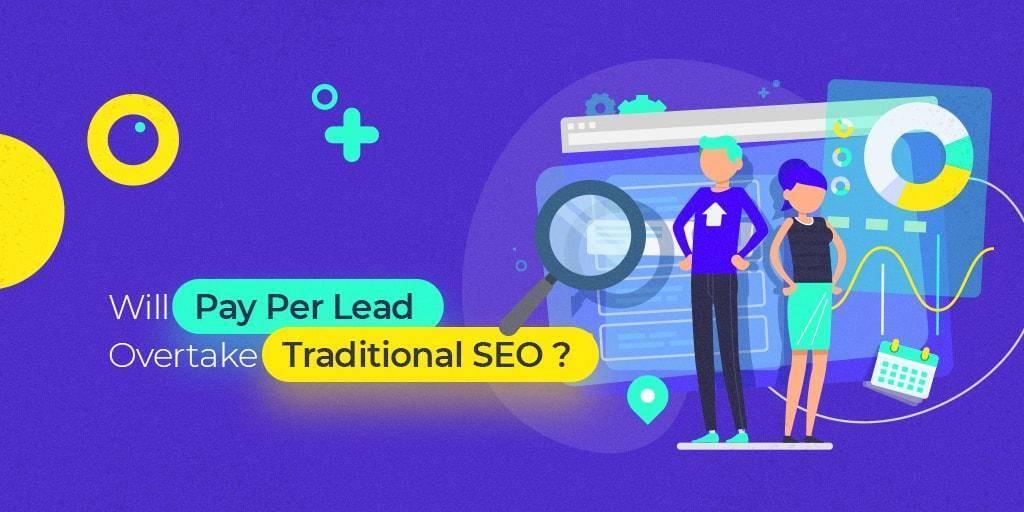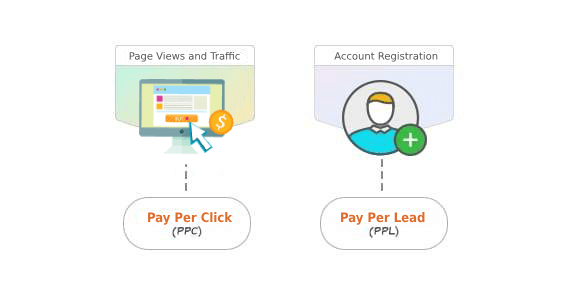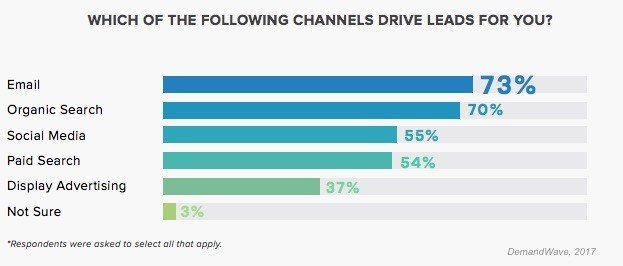In an AI world, where technology evolves so fast, it’s mandatory to be on a wave to get noticed, to find new ways of tracking our performances. And ROI is undeniably required.
Pay per lead emerged following a need to evaluate results that could not be followed through traditional forms. In theory, a lead is generated through a signup form which includes contact information and, in some cases, demographic information, too. It is usually is a non-cash event for those who sign-up because no payment is included.

Clients will always be important, but until a user gets there, a lot of steps should be completed. And today, it is even harder to do that when the user is “attacked” with information on every channel, at once. So, leads become a crucial segment.
Are the days when leads were left in the hands of a sales team long gone> Or does it really work in the present? Is PPL the past or the future of search engine optimization? You’ll find out through today’s discussion points:
- How Is Pay per Lead Different from Other Affiliate Marketing?
- The Influence of PPL on Traditional SEO
- The Future of SEO and PPL
- Can or Will PPL Overtake Traditional SEO?
If you don’t have a strategy to nurture leads along the consumer journey, then you’re missing out on a wealth of business.
Pay per lead or cost per lead (PPL) is a marketing model, a form of partnership between an advertiser and a business owner. The advertiser undertakes to bring leads to the partner-company and get paid by a commission.
This marketing model appeared with the need to evaluate this segment of users – leads – and motivate third-parties to get incentified by bringing more and more leads.
A lot of leads are lost due to multiple reasons. Qualified leads will stay on the sales funnel until the end by becoming future clients. It is also apt for the company to value them and ease their way to the payment step.

Now more than ever, it is important to develop a lead nurturing strategy to monetize leads. Studies have shown that companies that excel at lead nurturing generate 50% more sales and those nurtured leads make 47% larger purchases than non-nurtured leads.
So that’s why lead generation becomes crucial for a business owner.
1. How Is Pay per Lead Different from Other Affiliate Marketing Techniques?
Pay per lead is a form of paying per performance, similar to PCC. Pay per click is a marketing model for advertising, where an advertiser pays the publisher when the ad is clicked on.
Pay per lead appeared as a form of affiliate marketing.

Comparing PPC with PPL, we can say that the latter is focusing on a ”hint” and can be more efficient than the former.
Leads are like an unexplored path, full of goodies due to lots of reasons. Using a pay per lead model brings lots of benefits to the detriment of PPC and that is because:
- leads are still warm: that means users who witness your ads might be interested in your products, unlike the situation where PPC is used. If people are interested, they will perform different actions on your website and be engaged furthermore on the sales funnel, having a higher chance to become clients. All you have to do is convert them.
- don’t pay for extra costs: It is like you’ve skipped a few steps, which actually mean unwanted costs. You don’t waste your money on users that click aimlessly on your ads without knowing what they want.
- pay for what you get: you pay only for those who are interested. You invest in something that you know will bring you accurate results.
You’re not selecting clients blindfoldedly, you have guidelines to help you find your future clients on the map. Just like in a treasure hunt.
2. The Influence of PPL on Traditional SEO
If we look at the SEO as it is nowadays we can see with certainty that an evolution is noticeable and some parts of SEO are the same, while others are obsolete.
| SEO will only get harder! | |
| MaTT cutts | |
| Former head of the webspam team at Google | |
It is our duty to make it work. The same applies to PPL. There are some bad mouths that say the PPL model is not an advantage, but rather a prejudice, and can make you lose more money than you’ve gained. That can be true for lots of other digital marketing strategies if you don’t know how to implement them and don’t understand your niche.
Leads are a segment that shows potential and interest in your business. Even though it is a hard-to-get segment, it is one that’s worth your attention because it can bring you lots of benefits. Leads mean more clients, qualified users and brand new ambassadors for your brand.
The beauty of digital marketing lies in the fact that nearly everything can be tracked, as Alberto Garcia acknowledges himself:
| While these KPIs are useful in tracking progress and proving the effectiveness of your digital campaigns, they are essentially useless if you don’t use them to make educated decisions about your goals, strategies, and tactics. You must learn which factors will influence each of these metrics so that you can continue to optimize and improve your site. | |
| Alberto Garcia | |
| Founder Red Bamboo Marketing | |
PPL has a high influence on traditional SEO. It is more an inter-influencing relationship. In today’s internet era, good SEO for websites means good UX, on a broad view. Traditional SEO has a few main points:
- increases rankings;
- boosts traffic;
- brings qualified leads that will become clients (indirect increase in revenue).
PPL can make the last one work very well and propel the revenue with to a lead-generation option.
The higher advantage carried by PPL is the fact that it generates leads quickly in a world where traditional results take time. SEO specialists are also judged for their lack of power in influencing search engines to hurry up and show the company in the top search results (it is practically impossible to push a website in the first positions in a short period of time). But some of them have been fooled in the past by shady, so-called experts, and they don’t have so much trust anymore.
SEO can take more time, and often times business owners don’t want or have the time to wait for the outcome. They want quick results and revenue. In that case, they look for shortcuts. Some of their intentions are bad, summarized in black hat SEO techniques, but some of them are good, and focus on improving leads through quality/organic traffic.
DemandWave made a research where it showed that email marketing has the highest chance for boosting conversion rates and driving more leads. In the screenshot below you can see that email ranks as the top channel for driving leads (73% of respondents say it does so), followed by organic search (70%).

3. The Future of SEO and PPL
SEO will evolve as it has until now, trying to focus more on the user. I am picturing the future of SEO quite differently. We’ve witnessed contextual search, local search, object image detection and the ups and downs of paid advertising with AdWords, so my vision of the future turns in the favor of high-tech technology.
A new fusion between the two terms can give birth to a new business model – pay per lead SEO. It can change the traditions of agency fees for the future. SEO will continue to be used because it has some strong points.
As long as Google exists, SEO will continue to exist in some manner. Imagine you can also use alternate sources of traffic, like SEO, to increase the volume of leads. It wouldn’t be such a bad idea because not all leads are created equally.
| In other words, SEO is an asset. It’s like buying real estate and investing to remodel your kitchen and bath. That work will increase the value of your home so that you can sell it in the future for a profit. | |
| Michael Cianciulli | |
| Digital Marketing Analyst at Main Street ROI | |
4. Can or Will PPL Overtake Traditional SEO?
PPL SEO might sound like a code, but it will carry a high weight on the future of online marketing. Pay per lead will definitely overtake some part of traditional SEO sooner or later. For sure, it will have a higher impact on online advertising.
SEO as we know it will definitely change, as we’ve experienced along the years, but PPL might not be the single answer. For sure, it will continue to rise and bring lots of benefits. But, in terms of future unpaid/free “advertising” for your website, SEO will lead the way. It might have a high lifetime value. So the frank answer to the question – Can or Will PPL Overtake Traditional SEO? – will be: not really, but it can generate new types of businesses.
My guess is that AI content can be the future of traditional SEO. That’s my personal and branded point of view. I suppose Google will make amendments in trying to offer more and more personalized content. So figuring out what the customers searched on Google and based on the websites visited and other historical data, it might offer different types of content.
We’re positive on believing that a fusion between traditional methods and modern techniques is a good strategy to drive leads and monetary results.
The post Pay per Lead – A Practice of the 90’s or the New Age of SEO? appeared first on SEO Blog | cognitiveSEO Blog on SEO Tactics & Strategies.
Pay per Lead – A Practice of the 90’s or the New Age of SEO? posted first on http://nickpontemarketing.tumblr.com/
No comments:
Post a Comment